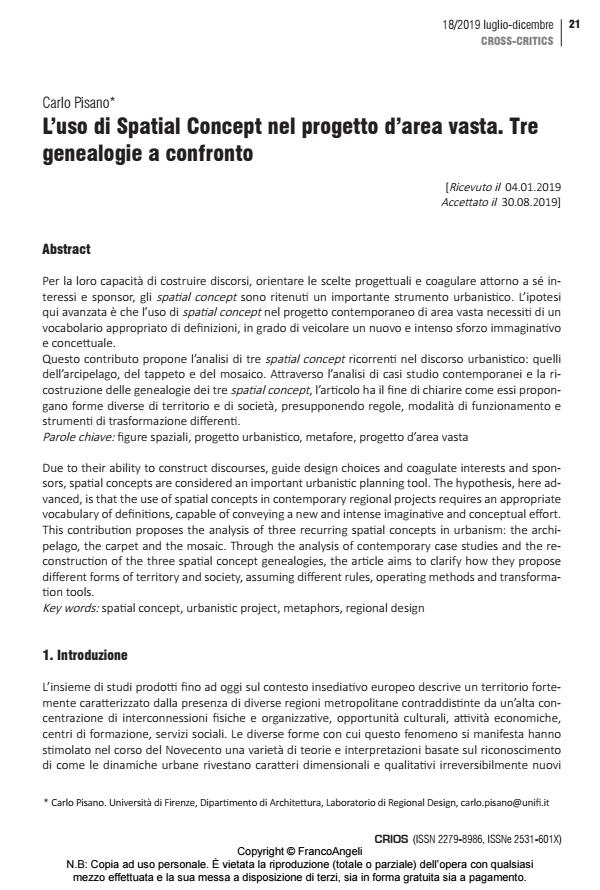L’uso di Spatial Concept nel progetto d’area vasta. Tre genealogie a confronto
Journal title CRIOS
Author/s Carlo Pisano
Publishing Year 2020 Issue 2019/18
Language Italian Pages 16 P. 21-36 File size 577 KB
DOI 10.3280/CRIOS2019-018003
DOI is like a bar code for intellectual property: to have more infomation
click here
Below, you can see the article first page
If you want to buy this article in PDF format, you can do it, following the instructions to buy download credits

FrancoAngeli is member of Publishers International Linking Association, Inc (PILA), a not-for-profit association which run the CrossRef service enabling links to and from online scholarly content.
Due to their ability to construct discourses, guide design choices and coagulate interests and sponsors, spatial concepts are considered an important urbanistic planning tool. The hypothesis, here advanced, is that the use of spatial concepts in contemporary regional projects requires an appropriate vocabulary of definitions, capable of conveying a new and intense imaginative and conceptual effort. This contribution proposes the analysis of three recurring spatial concepts in urbanism: the archipelago, the carpet and the mosaic. Through the analysis of contemporary case studies and the reconstruction of the three spatial concept genealogies, the article aims to clarify how they propose different forms of territory and society, assuming different rules, operating methods and transformation tools.
Keywords: Spatial concept, urbanistic project, metaphors, regional design
- Mondeggi Mario Biggeri, Giuseppe De Luca, Andrea Ferrannini, Carlo Pisano, (ISBN:979-12-215-0195-7)
Carlo Pisano, L’uso di Spatial Concept nel progetto d’area vasta. Tre genealogie a confronto in "CRIOS" 18/2019, pp 21-36, DOI: 10.3280/CRIOS2019-018003